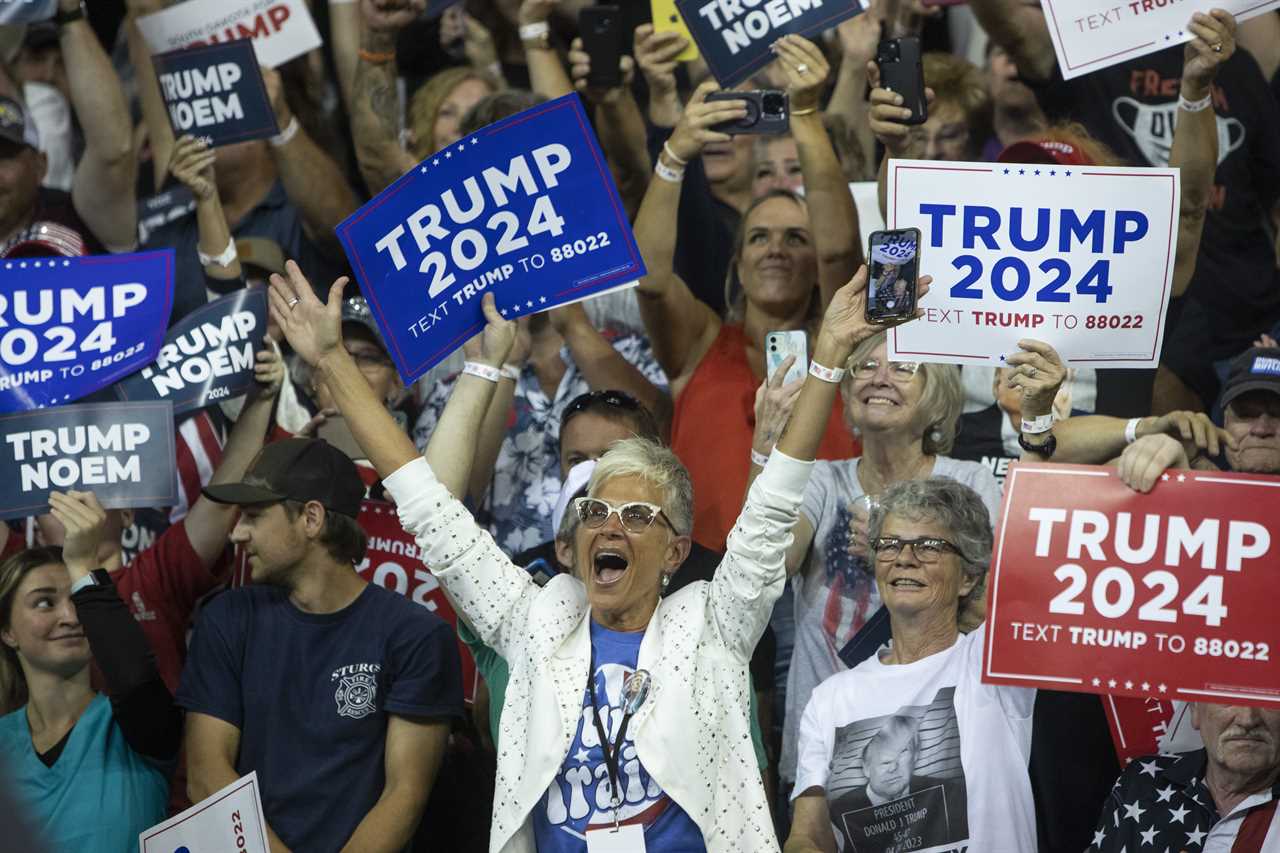
They’re more conservative than other Republicans. More likely to be men. Less likely to have graduated from college.
And they’re way more confident they’ve made up their minds, even though the first primary or caucus is still four months away.
That’s the coalition former President Donald Trump has assembled in asserting his dominance over the Republican presidential primary.
Examining the voters assembled behind Trump — and the minority who are backing other candidates — is essential to understanding how he came to dominate the fight for the GOP nomination. It also underscores the uphill climb Trump’s opponents have to unseating the former president as the leader of a Republican Party he’s reshaped in his own image. Call it a pre-mortem autopsy for the primary, which feels close to being over despite Trump’s well-documented judicial headaches.
What was once an emerging two-man race between Trump and Florida Gov. Ron DeSantis instead now looks like a runaway train. Two major national polls this week showed Trump at or above 60 percent among Republican primary voters, a commanding lead far greater than early in the year, when Trump’s average share of support was in the low-to-mid 40s.
In order to get a full profile of the voters who are with Trump and those who aren’t, I used additional data provided by Quinnipiac University from a poll the school released this week showing Trump with a 50-point lead over DeSantis, 62 percent to 12 percent.
This analysis combines all respondents who chose another candidate rather than looking at DeSantis’ supporters, for example, because the individual non-Trump candidates don’t have enough voters to form a meaningful sample on their own.
Even though DeSantis and biotech entrepreneur Vivek Ramaswamy — the second- and third-place candidates in the Quinnipiac poll — are mostly running to Trump’s right, the former president’s supporters are consistently more conservative than the voters who back other candidates.
In the Quinnipiac poll, 46 percent of the Republican and Republican-leaning independent voters who said they support Trump in the primary identified as “very conservative.” Among the voters who chose other candidates, only 22 percent were “very conservative.” That means Trump’s voters are more than twice as likely as other candidates’ supporters to self-describe as “very conservative.”
Just 21 percent of Trump supporters say they’re “liberal” or “moderate” — but 39 percent of non-Trump voters come from the primary electorate’s left flank.
That doesn’t mean DeSantis, Ramaswamy or any of the other Trump challengers would be well-served to tack left. Self-identified liberals and moderates only make up 29 percent of Quinnipiac’s sample of Republicans, and entrance and exit polls from 2016 suggest they’re also distinct minorities in the early states of Iowa (15 percent), New Hampshire (29 percent) and South Carolina (18 percent).
Ideology isn’t the only defining cleavage between Trump and non-Trump Republican voters. Education polarization has roiled American politics over the past two decades, particularly among white voters, who are increasingly divided between more-educated voters moving toward Democrats and those with lower levels of educational attainment becoming more Republican. The same rupture exists within the GOP.
According to the Quinnipiac poll, 54 percent of Trump’s white supporters were without college degrees and 15 percent of them had four-year degrees. For the other candidates’ white voters, 36 percent had no college degrees and an equal share had four-year degrees.
Given the gender gap between the parties, Trump’s alleged misconduct and his comments about women, it’s not a surprise that men made up a majority of his Republican supporters. But the margin is not that lopsided: 42 percent of Trump voters in the primary were women in the poll, and the former president was the top choice of Republican women by far.
One of the most striking differences between Republican voters who said they want Trump again and those who don’t is their respective levels of commitment.
Across polls, Trump voters are disproportionately likely to say their minds are made up. In the Quinnipiac poll, 68 percent of Trump’s supporters said they were “firmly set” on their choice. But among the GOP voters who chose other candidates, only 16 percent had fully decided on a nominee.
That’s also the case in the states with early caucuses or primaries. In a Monmouth University-Washington Post poll of Republican primary voters in South Carolina released this week, three-in-four Trump voters, 76 percent, said they were definitely backing him. Only 23 percent said they would even consider someone else.
But the numbers are almost flipped for those who picked another candidate. Just a third of those voters said their support was definite.
Not only are Trump voters more committed and unlikely to be moved off the former president, those currently aligned with other candidates aren’t necessarily all dead-set against him. In a Fox News poll out this week, 65 percent of all Republicans said they would “definitely” vote for Trump in the primary, but another 22 percent said they “might” vote for him.
That combines for 86 percent of Republicans who “definitely” or “might” vote for Trump, far greater than for DeSantis (66 percent), Ramaswamy (57 percent) or former South Carolina Gov. Nikki Haley (42 percent), the next three candidates behind Trump in the poll.
Essentially, the Republican primary has boiled down to a majority of voters who would pick Trump — and most of them are sure about it. They represent what has become the most influential voting bloc in the party: more conservative voters with lower levels of educational attainment.
Banking on something happening to disrupt that — whether it’s another legal bombshell or an early-state electoral upset — may be Trump’s opponents’ best hope, but it isn’t much of one.
----------------------------------------
By: Steven Shepard
Title: Trump's become a runaway train in the GOP primary. Here's why.
Sourced From: www.politico.com/news/2023/09/16/trump-gop-poll-voting-00116382
Published Date: Sat, 16 Sep 2023 06:00:00 EST






